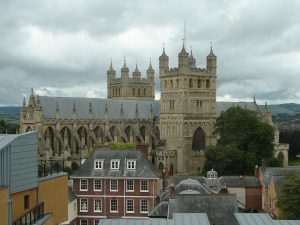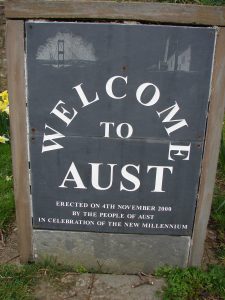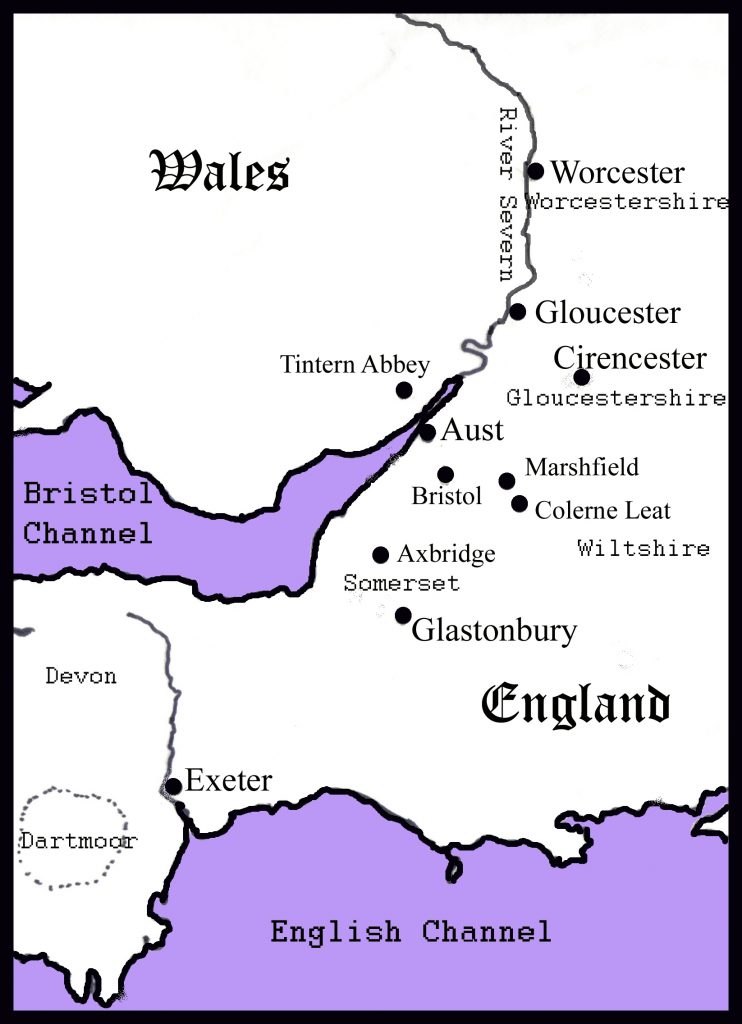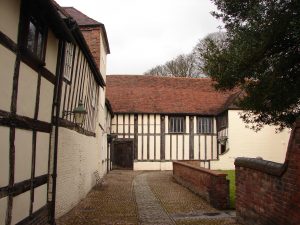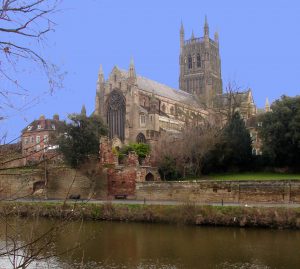Gloucester in 1392 is the setting for Memento Mori, the third novel in my Lady Apollonia West Country Mysteries. This ancient city was founded in AD 97, a half century after the first Roman military fortress under Emperor Nerva as Colonia Glevum Nervensis. Fragments of the Roman wall survive.
Medieval Gloucester had outgrown the Roman city, particularly to the west, and was an important centre for processing wool at the time of my story. The church of the Abbey of Saint Peter survived after the dissolution of the monasteries by King Henry VIII and is now the Cathedral Church of the Holy Trinity in Gloucester.
In this story, the Lady Apollonia visits the abbey church and the tomb of King Edward II. This royal tomb had already attracted numbers of pilgrims in the 14th century large enough to fund significant improvements in the church. Portions of the abbey wall survive as does Saint Mary’s Gate into the abbey grounds. Modern visitors will also find ruins of some abbey buildings, such as the hospital used in my story.
Other medieval buildings which survive that are mentioned in Memento Mori are the church of Saint Mary de Crypt and the ruins of Saint Oswald’s Priory now administered by English Heritage. The Chapel of Saint Kyneburgh and the nearby Saint Kyneburgh’s Well are described in my story but do not survive. However, the tall, modern tower pictured below marks the location of Saint Kyneburgh’s Well, and modern buildings on Southgate Street appear on the right. 
